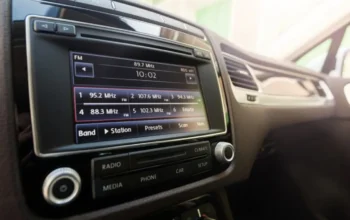How Electric Vehicles Are Changing Everyday Transportation
Electric vehicles (EVs) have rapidly transitioned from being a niche novelty to a mainstream choice, fundamentally transforming the world of personal mobility. What once seemed like futuristic technology is now a daily reality for millions, as environmental concerns and rising fuel prices prompt drivers to seek more innovative and cleaner alternatives.
Manufacturers worldwide have responded with a wealth of new models and features, making it easier for families and commuters alike to consider making the switch. At the same time, government initiatives are accelerating the shift by offering incentives, stricter emission standards, and direct investment in expanding charging networks.
As we move forward, more and more people are recognizing the many benefits of EVs, making this revolution a defining moment in the story of transportation. Discover how electric vehicles are reshaping daily life, and learn more about this pivotal change in how we travel.
Whether you’re enticed by the smooth acceleration that comes from instant torque, aiming to reduce your carbon footprint, or seeking a way to slash your maintenance bills, EVs present substantial advantages that appeal to a broad spectrum of drivers. As the technology underpinning these vehicles advances, resulting in longer ranges and faster charging times, barriers to ownership continue to fall.
Environmental Benefits
Electric vehicles are a crucial element in the global transition to cleaner, healthier cities. Unlike traditional cars that burn gasoline or diesel and produce harmful exhaust emissions, EVs offer the benefit of “zero tailpipe emissions”—meaning they release no pollutants directly into the atmosphere while driving.
This difference translates to an immediate improvement in air quality, particularly in congested cities where vehicle emissions can create harmful smog and exacerbate respiratory illnesses among residents. This is a key reason why policymakers and environmental groups consider widespread EV adoption essential to achieving climate goals.
Beyond reducing air pollution, EVs also have a positive impact on noise pollution. Electric motors are significantly quieter than combustion engines, resulting in calmer, less stressful streets and neighborhoods. Moreover, ongoing advancements in battery recycling and the integration of renewable energy are helping to reduce the overall environmental impact of producing and operating electric vehicles.
Car companies and governments alike are working to ensure that the entire EV lifecycle, from battery creation to eventual recycling, is as sustainable as possible. The shift to electric mobility is, therefore, not just a matter of cleaner air—it’s a step toward a healthier, more balanced environment overall.
Cost Savings
Initial sticker prices for electric vehicles can seem daunting when compared to their gasoline-powered counterparts, but the total cost of ownership often tells a different story. This is mainly because EVs are mechanically simpler, lacking components such as exhaust systems, fuel injectors, and timing belts that typically require service or repair in traditional vehicles.
Studies show that EV owners can save substantially on maintenance expenses over the life of their vehicles. Routine tasks like oil changes are unnecessary, and brake pads tend to last longer due to regenerative braking systems that harness kinetic energy while slowing the car down.
Fuel is another area where drivers can see significant savings. Charging an EV at home or at work is generally much cheaper than fueling up at the pump, and the price of electricity is less subject to the dramatic swings often seen with oil and gas.
Some utilities also offer special rates for EV owners who charge during off-peak hours, further cutting energy costs. According to the Natural Resources Defense Council, EV owners can save thousands of dollars over time on fuel and maintenance costs, making the switch not only environmentally innovative but also economically sound.
Government incentives—including tax credits, rebates, and discounts on tolls or registration—help to reduce the purchase price for many buyers, making EVs a much more affordable option. When considering all these factors, the financial argument for going electric only grows stronger as technology advances and economies of scale bring prices down.
Charging Infrastructure
A strong and widespread charging infrastructure is essential for encouraging more people to adopt electric vehicles. When drivers cannot easily access charging stations, concerns about running out of power—known as range anxiety—can deter them from making the switch to electric vehicles.
To address this, governments, energy providers, and private companies are significantly expanding both the availability and performance of public chargers. The U.S. Department of Energy offers a helpful resource for locating nearby stations, making it easier for drivers to plan routes and find convenient charging options.
The U.S. government has committed to building 500,000 charging stations nationwide by 2030, aiming to serve urban centers, highways, and rural communities alike. Private initiatives are also playing a key role in developing high-speed charging routes between major cities and installing chargers at popular destinations, such as malls, hotels, and offices.
As these networks continue to grow, electric vehicle ownership is becoming more practical for everyday drivers. Since most daily travel falls within the range of modern EV batteries, charging at home overnight or topping up at public stations easily fits into most routines.
Impact on the Auto Industry
The transformation driven by electric vehicles is upending traditional business models and reshaping the global auto industry. Legacy carmakers with decades of experience in building internal combustion engines are now investing significant resources in retooling their factories, developing new supply chains, and forming partnerships with battery producers. Startups focused solely on electric vehicles are contributing fresh ideas, embracing direct-to-consumer sales, and accelerating innovations in user interface and vehicle design.
This shift extends far beyond assembly lines. Demand is increasing for workers skilled in lithium-ion battery manufacturing, advanced electronics, and the integration of renewable energy systems. Dealerships, repair shops, and parts suppliers are also adapting to specialize in EVs and their unique service needs.
As the pace of change quickens, communities and countries that invest in electric mobility infrastructure and workforce development are likely to reap significant economic benefits in the years ahead. The electric revolution is not just changing how vehicles are powered—it’s redefining the very nature of the auto sector and the careers it sustains.
Integration with Renewable Energy
One of the most exciting developments in EV technology is the deepening connection between personal transportation and renewable energy production. An increasing number of charging stations are now powered by electricity generated from solar panels, wind farms, or hydroelectric plants, decreasing the carbon footprint associated with operating an electric vehicle. As utility grids become “greener,” charging an EV is effectively the same as fueling up with clean energy.
Going even further, some modern EVs support “vehicle-to-grid” (V2G) technology, allowing cars to store surplus energy and feed it back into the grid at times of high demand. This two-way power flow can help stabilize energy supplies, increase the use of renewables, and even offer financial incentives to car owners who make their battery capacity available when it’s needed most. These innovations are laying the groundwork for an integrated, flexible, and sustainable energy ecosystem where transportation is a vital partner, not just a consumer.
Advancements in Autonomous Driving
Electric vehicles are at the forefront of the autonomous driving revolution. Automakers are leveraging the digital platforms inherent in EV designs to integrate advanced driver-assist features, such as adaptive cruise control, lane-centering, and automatic emergency braking. Many electric cars also feature internet connectivity and over-the-air software updates, allowing for continuous improvements and additions to features long after the vehicle leaves the showroom floor.
As these systems evolve, they pave the way for fully self-driving vehicles. The combination of electric propulsion and sophisticated sensor technology could transform travel and logistics, reshaping urban planning, reducing accidents, and providing new options for users with mobility impairments or the elderly. The partnership between EVs and autonomy is likely to accelerate innovation in both fields and bring a host of societal benefits in the near future.
Challenges and Solutions
Despite significant progress, several challenges still hinder the adoption of universal EVs. Higher upfront costs, limited charging access in some regions, and concerns about battery lifespan can discourage potential buyers. Yet, solutions are emerging at a rapid pace: battery manufacturers are developing cells with longer life and faster charging times, and both private and public entities continue to expand charging networks at workplaces, apartment complexes, and rural locations.
Government policies such as increased incentives for EV purchases, stricter emissions standards for gasoline vehicles, and investments in research and development are supporting this transition. Automakers are also introducing more affordable models and flexible financing options, making EVs accessible to a broader cross-section of the population. As these practical and financial barriers are addressed, electric vehicles are becoming a more realistic choice for an increasing number of drivers with each passing year.
Future Outlook
The momentum of the electric vehicle movement shows no sign of slowing. Supportive legislation, growing public awareness, and rapid advances in technology are setting the stage for a future in which EVs are not the exception—but the rule. As more individuals and businesses adopt this technology, we can look forward to cleaner cities, quieter neighborhoods, and a transportation network that supports global sustainability goals.
In the years ahead, the transition to electric transportation will be recognized as a historic milestone: not just another evolution in the auto industry, but a comprehensive upgrade to how societies move goods, services, and people.
With tangible benefits visible today and an even more compelling promise for tomorrow, electric vehicles are reshaping not only how we travel, but how we think about the planet and our place in it. By embracing this ongoing revolution, we are taking meaningful steps toward a cleaner, healthier, and more sustainable future for everyone.
Driving the Change Forward
Electric vehicles represent more than a technological advancement—they symbolize a pivotal shift in how we approach mobility, energy, and the environment. As their presence on roads continues to expand, EVs are proving that sustainability and innovation can go hand in hand, offering tangible improvements in air quality, personal finances, and overall driving experience. What once seemed like a gamble has quickly become a wise and forward-thinking decision, one that has been widely adopted by drivers around the world.
The transformation underway reaches beyond individual choices, influencing industries, urban planning, and energy strategies. From cleaner commutes and quieter streets to integrated renewable energy systems and more intelligent infrastructure, electric vehicles are anchoring a new era of conscious transportation. Their impact is both immediate and long-lasting, reshaping the future of mobility for generations to come.
As we continue down this electrified path, the momentum behind EV adoption will only grow stronger. By staying informed, supporting sustainable initiatives, and considering the impact of our transportation choices on the world around us, each of us plays a role in driving this change forward—toward a cleaner, brighter, and more equitable future.




